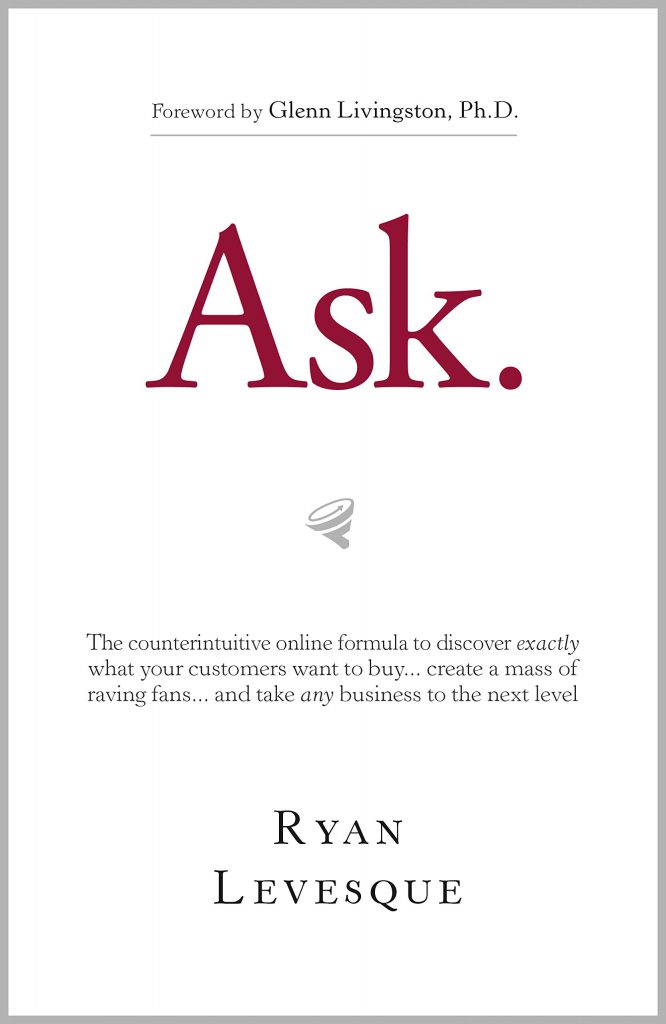 Ask : The counterintuitive online formula to discover exactly what your customers want to buy…create a mass of raving fans…and take any business to the next level is a book by sales guru Ryan Lavesque, about a glaringly obvious way to interact with prospective clients, but which only a handful of different kinds of businesses actually use. To say it succinctly, it’s surveys. Lots of surveys.
Ask : The counterintuitive online formula to discover exactly what your customers want to buy…create a mass of raving fans…and take any business to the next level is a book by sales guru Ryan Lavesque, about a glaringly obvious way to interact with prospective clients, but which only a handful of different kinds of businesses actually use. To say it succinctly, it’s surveys. Lots of surveys.
That’s right. A survey for pretty much anything you need to sell, or buy, or broker or whatever.
The idea in Ask is broken down into three major parts. A “Deep Dive Survey”, Analysis, and “Micro-Commitment” sales surveys. A practitioner would use a deep dive survey to find out who is interested in a product you want to sell. They’d analyze those results and come up with a few very broad categories of people. Then, using those categories, sales pages and marketing material would be created to drive those particular kinds of customers into a micro-commitment survey; a survey that asks them to put in a small amount of effort to describe their needs as they understand them. Using their response, and the benefit of their prospect having already put in a little effort, a sales person is in a much better position to close the deal.
Of course, this is a significant over-simplification of the material in the book. But it’s the gist. If you had experience with creating effective surveys already, but hadn’t thought to use it in your sales process, you could probably take that three step flow above and just roll with it. I imagine you’d do fine. But there’s some exceptionally useful tips for using surveys this way also.
For example, Lavesque suggests that when just doing market research, use an ugly looking, but functional, form because you want the most enthusiastic, motivated people to respond. You don’t want people who needed to be coddled through the process with pretty designs. And, start your form off with a broad, open ended question. Like the design, the open ended question will drive away less motivated people, and if that question is all they respond to, you get the bare minimum of the details you need for them to be useful.
The book goes into pretty good detail about the analysis phase, going so far as using a spreadsheet to calculate the most important answers on the survey, and how to organize the information to make it useful.
I like this book because it helped me to look at surveys differently. And, having implemented some of those micro-commitment surveys on by business’ site, we call them ‘discovery tools’ (because they function as a tool), I can attest that the client interaction is much more fluid and there are fewer misgivings about people’s needs.
What I didn’t really like about this book was how increasingly clear it becomes that the book is a part of another sales funnel, leaving you wondering what might’ve been strategically left out or deliberately misrepresented. Maybe nothing, but sales gurus have mostly squandered their benefit of the doubt and we’re all suspicious now.
Nonetheless, I recommend this book to business owners. Or maybe almost anyone working on a project involving lots of people.

Recent Discussion